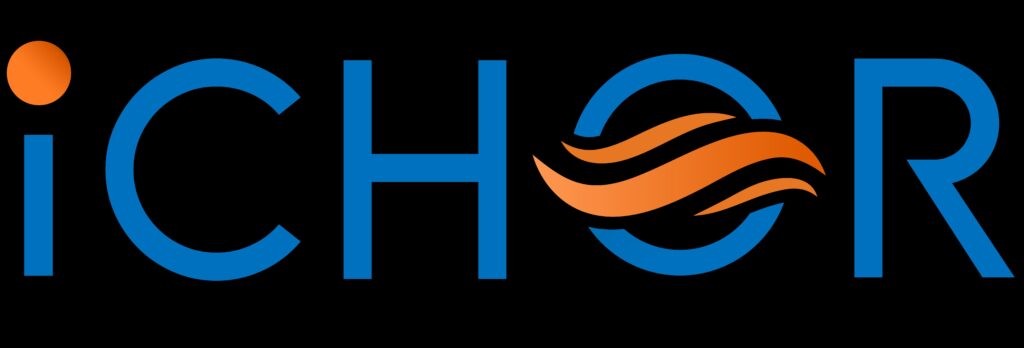VisionTech Angels enjoys strong deal flow, something I credit to our relationships with other venture groups in state and across the country. When our syndication partners have opportunities they believe are a good fit for our group, they send them our way. This ensures we see top quality deals, but also allows us to leverage due diligence. This is how I met Tim Blair, president of iCHOR. Queen City Angels liked Tim and iCHOR’s percutaneous clot retrieval system that improves patient outcomes and reduces surgical costs.The value proposition, leadership, and traction is compelling, so I invited Tim to present at our February 29 pitch events. Here’s a preview.

BP: How did you get involved with iCHOR?
TB: The past 30 years, I’ve focused my career on medtech, medical device, healthcare consumables, and nutraceuticals. This includes sales, marketing, business development, operations and R&D across the peripheral vascular space. I spent more than nine years working at NAMSA, a medical device contract research organization, which whetted by appetite for improving technology and bringing devices to market more efficiently.
In 2018, I became president of a medical device company called iCHOR Vascular, a platform technology that is aimed at becoming the market leader in opening vascular occlusions related to vascular disease such as embolic and thrombotic events. Our goal is to be an elegant “first line on the table therapy” in treating peripheral vascular occlusions.
BP: Explain the issue you’re addressing.
TB: The gold standard for removing peripheral blood clots are drugs (lytics) that essential break down clots over a few days. However 40-50% of patients are not candidates for lytics which means they receive a surgical thrombectomy or we intervene with stroke type technologies that are not always optimal for the issues in our peripheral vascular system. It should also be noted that drug and surgical therapeutic options have significant bleeding and surgical complications that can be minimized or eliminated with iCHOR technology.
Unlike data we now have on coronary disease and stroke, peripheral vascular occlusions are far less understood. Peripheral disease of arteries and veins in lower extremities is a fast-growing market with significant mortality rates. The tools and techniques to treat these conditions are outdated, don’t improve outcomes yet costs to treat are skyrocketing. What does treatment look like now? It’s either drugs to dissolve the clot which require several days in the ICU or surgery. We knew we needed new tools to address the shortcomings of today’s gold standard, drugs and surgeries. Patient outcomes have not budged in 50-plus years. This directly attributed to the lack of reasonable therapeutic options in the toolbox today.
BP: What’s driving the market?
TB: The market is driven by an aging population, patients living longer, an increase in disease prevalence, increases in virus-related conditions that also increase prevalence, and things like opiates and other drug use. Today’s treatment options are less than perfect and extremely expensive. We need tools that are simple, effective, and equally address the economics that plague our healthcare industry.

BP: Explain iCHOR’s solution and value proposition.
TB: The iCHOR system replicates successful parameters of surgical clot removal with a proven mechanism of action (balloon sweep) combined with on-demand embolic protection. iCHOR checks key boxes for physician end users and patients:
- Non-surgical therapy
- Non-drug therapy
- Arresting flow avoids blood loss often associated with surgery or aspiration tools
- Arresting flow avoids distal embolization of materials moving downstream
- Designed to fit all anatomical vessels
- Designed to always maintain sheath/wire access so physicians can make multiple passes quickly
- Avoids scarring or valve damage associated with metal dragging tools like stent retrievers
- Does not require capital equipment.
We believe iCHOR’s technology will become the new gold standard to treat peripheral blood clots because it’s easy to use, can treat a wide range of clot anatomy and morphology, and we address the economic issues associated with today’s therapies.
BP: What’s your competitive advantage?
TB: Simplicity and familiarity. Our platform is built on techniques physicians have trusted for decades in surgery. Physicians aren’t having to be convinced of using something totally foreign or difficult to master. The mechanism of action is proven. We just made it minimally invasive. Once they use our iSWEEP device and discover how simple and effective it is, well, there’s no going back.
BP: You’ve assembled a strong leadership team and strategic partnerships.
TB: We sure have! Our executive team all have decades of experience in the medtech industry and professional networks that are proven and trusted. Our scientific advisors include vascular surgeons, interventional radiologists and cardiologists, who are industry influencers and are actively involved in advising iCHOR so we can get better treatment options to market sooner rather than later. Lastly, we have partnerships with the Cleveland Clinic’s Global Cardiovascular Innovation Center; NAMSA, the testing gold standard for the FDA and globally notified bodies); Medical Murray, a best-in-class engineering and manufacturing company we’ve worked with previously; and experts in reimbursement, intellectual property and financial services. We are looking to add several more scientific advisors and strategic partnerships in the coming months as part of our go to market strategy.
BP: Where are you in terms of commercialization?
TB: We have both market clearance from the FDA and published real-world efficacy data in a 25-patient test market. We continue to focus on market validation and real-world data from a clinical perspective, but also on technical and manufacturing validation. The venous device is currently being used in a limited market release and expect the University of North Carolina, Vanderbilt, and several other major health systems to come on board this quarter. Our next generation devices have already been submitted to the FDA.
Although we’re in the early stages of commercialization with this limited market release, we have started to execute our hybrid sales model which utilizes distributors, direct hires and 1099s. It’s an approach we’ve used successfully in the past.
BP: What’s the market size?
TB: In a word, massive. This is a $4.7 billion available treatable market in the U.S. and $20 billion outside the U.S. for our current iCHOR arterial and venous technologies. Peripheral arterial disease and deep vein thrombosis is a rapidly growing market currently underserved with mechanical options. We believe our ease of use, effectiveness, less stress on patients, and the economics will make iCHOR devices the “go to.”
BP: What kind of IP do you have?
TB: Our first patent was issued in the U.S. in August 2021. Our patents support the marketed product, which is not always the case with many patents. Our IP also supports the methods behind the procedures to prevent people from cobbling parts together to do what we do. Additionally, we have patent protection in Canada and the European Union. Our plan is to add to our IP portfolio as we extend the product line and indications for use.
BP: What round is this?
TB: This is a Series A Equity Round with a $5 million ask. Queen City Angels is leading the round and we’ve gotten strong support from a number of other angel groups around the country. We currently have $4.2 million in and hope to close the round quickly so we can focus 110% of our efforts on commercializing iCHOR.
BP: What is your planned use of funds?
TB: The proceeds of this raise will be used to fund R&D, quality and regulatory, sales and marketing, and administrative costs aimed at strong exit potential and an eventual positive balance sheet. We have a clear path of milestones laid out, and this funding will help us check the boxes our industry values.
BP: Give me three reasons why VisionTech Angels members should invest.
TB: Sure! First, couple the addressable market for our iCHOR arterial and venous technologies ($4.7 billion) with the tremendous interest from physicians and it’s a huge opportunity. Second, our market clearance and early procedures are going well; we’re meeting our de-risking milestones which is critical. Finally, our valuation and terms are very favorable to investors, and we’d love to have VisionTech Angels investors involved.
VisionTech Angels’ Virtual Pitch Events will be held Thursday, February 29 at 12 Noon and 6 p.m. ET. Pitch events are open to our members and accredited investors interested in joining our group. To register, check your email for an invitation, go to our Events page where you’ll find the RSVP links. You can also email Ben Pidgeon at bpidgeon@visiontech-partners.com.

